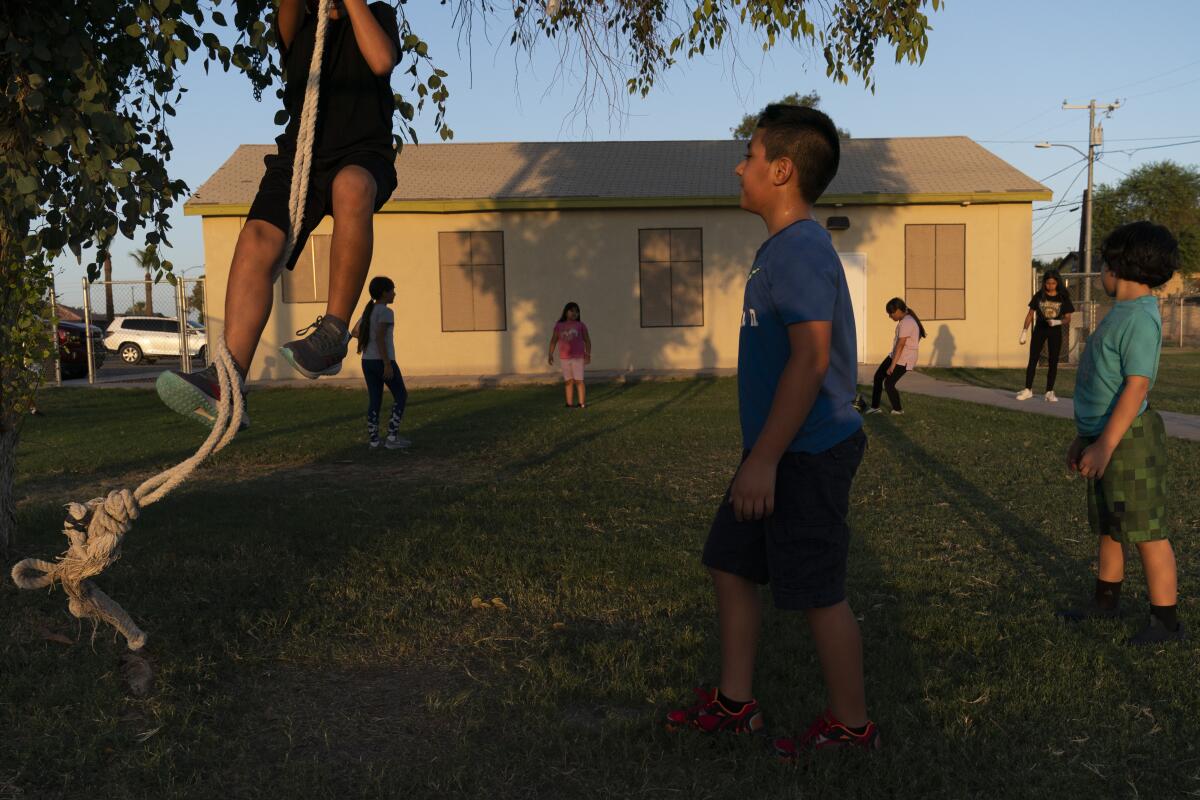Latinos undercounted by 5% in latest census, more than three times the amount in 2010

- Share via
The 2020 census missed an unexpectedly small percentage of the total U.S. population given the unprecedented challenges it faced, but Black, Hispanic and Native American residents were overlooked at higher rates than a decade ago, the U.S. Census Bureau said Thursday.
The percentage of people overlooked in the 2020 census was much higher for some minority groups, the bureau said in a report on how well the once-a-decade count tallied every U.S. resident and whether certain populations were undercounted or overrepresented. Overcounts can occur, for example, when those who own vacation homes are counted there as well as at their home addresses.
The Black population in the 2020 census had an estimated net undercount of 3.3%, and the gap was almost 5% for Hispanics and 5.6% for Alaska Natives and Native Americans living on reservations.
The non-Hispanic white population’s net overcount was 1.6%, and Asians had a net overcount of 2.6%.
In the 2010 census, by comparison, the Black population had a net undercount of more than 2%, and it was 1.5% for the Hispanic population. There was a nearly 4.9% undercount for Alaskan Natives and Native Americans living on reservations, and an undercount of 0.08% for Asians. The non-Hispanic white population had a net overcount of 0.8%.
The 2020 census reportedly missed 0.24% of the entire U.S. population, a rate that wasn’t statistically significant despite being much larger than the 0.01% missed in the 2010 census.
The census figures help determine the distribution of $1.5 trillion in federal spending each year as well as how many congressional seats each state gets. Undercounts in various populations can shortchange those groups’ funding and political representation over the next decade.
In the years leading up to the 2020 census, advocates worried that a failed attempt by the Trump administration to add a citizenship question would make some Hispanics and immigrants afraid to participate, whether they were in the country legally or not. The Trump administration also unsuccessfully tried to get the Census Bureau to exclude people who were in the country illegally from the numbers used to divvy up congressional seats among the states.
In a conference call Thursday, Census Bureau Director Robert Santos said many Latino communities throughout the U.S. suffered during the pandemic from joblessness and housing insecurity, which contributed to the group’s undercount. But he added that the Trump administration’s actions also may have had an effect.
“I’m personally not surprised to see the results we see today,” said Santos, who was nominated by President Biden.
Arturo Vargas, chief executive of NALEO Educational Fund, which works for Latino participation in the political process, said he had never seen such a large undercount of Latinos in his 35 years of following the census.
“As you can imagine, we are just terribly — I can’t even find the word right now — upset about the extent of the Latino undercount,” he said on the conference call.
Lycia Maddocks, political director of NDN Collective, a South Dakota-based indigenous advocacy group, said COVID-19 made it difficult to count people on reservations because many tribes closed their borders. Additionally, many residents didn’t have internet access, and the Census Bureau’s efforts to hire tribal members for the count “were slow and ... too little,” said Maddocks, a member of the Fort Yuma Quechan Tribe based in Arizona.
Any undercount “puts tribal nations at a disadvantage when seeking funding for basic healthcare, infrastructure, education and other needs that contribute directly to advance self-determination,” she said.
The pandemic disrupted census operations and schedules, and made residents wary of opening their doors to answer census takers’ questions. Wildfires in the West and hurricanes in the Gulf Coast forced many residents to flee their homes during the count’s door-knocking phase.
For the first report released Thursday, the Post-Enumeration Survey, census takers re-interviewed a sample of households, and their responses were matched with their 2020 census results.
The second report, the Demographic Analysis, used immigration data and birth and death records to calculate the population, which was then compared with the 2020 census results.
AP writer Felicia Fonseca in Flagstaff, Ariz., contributed to this report.
Sign up for Essential California
The most important California stories and recommendations in your inbox every morning.
You may occasionally receive promotional content from the Los Angeles Times.







